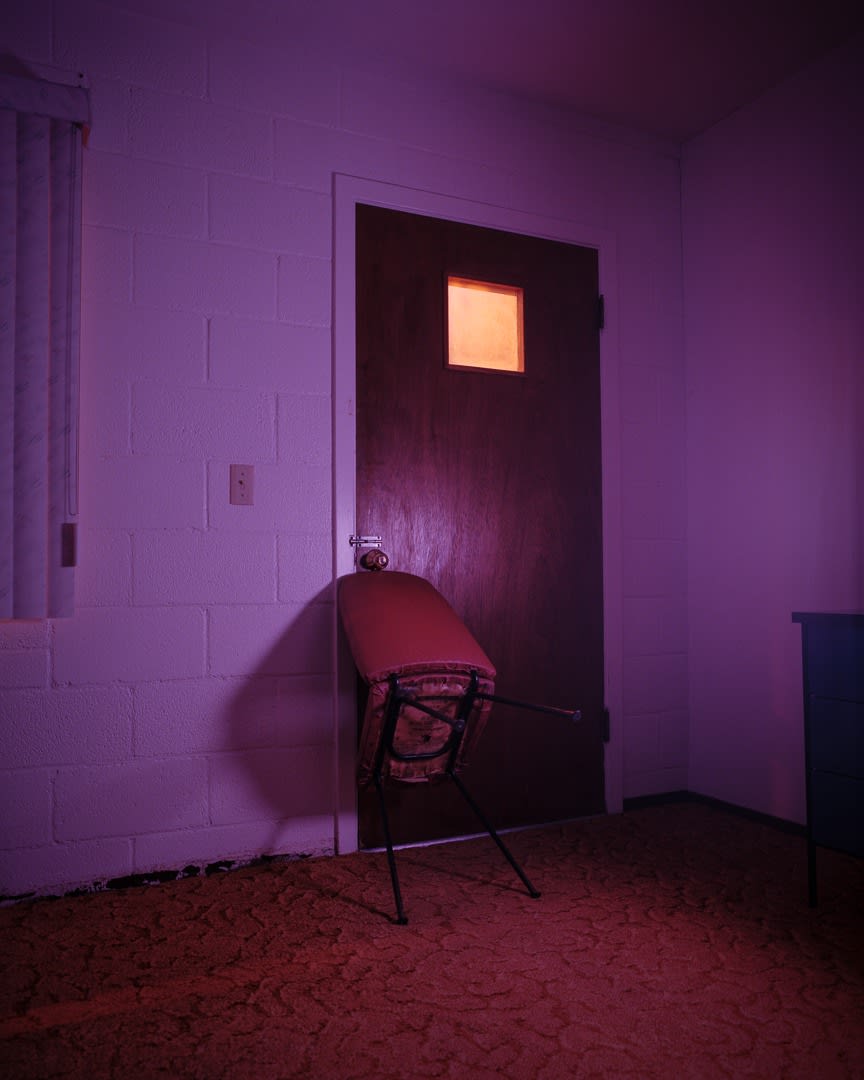
Todd Hido American, b. 1968
.
61 x 50.8 cm / 24 x 20 in
.
Edition of 5 + 1AP
96.5 x 76.2 cm / 38 x 30 in
.
Edition of 3 + 1AP
121.9 x 96.5 cm / 48 x 38 in
.
Edition of 1 + 1 AP NFS
187.3 x 149.9 cm / 73 3/4 x 59 in
.
In the haunting glow of Todd Hido’s 1995 photograph, we find ourselves in a room that feels suspended between worlds-a liminal space heavy with silence and suggestion. The scene is simple: a closed wooden door with a single, softly illuminated window, its knob barricaded by an upturned chair. The carpet is worn, the walls bare, and the light, awash in saturated purples and reds, seems to seep from another reality entirely.
What makes Hido’s interiors so compelling is the way they invite us to imagine what lies just out of sight. Photographing interiors “brings the viewer inside of the home,” layering narrative and implication without ever spelling out the story. The light in the window is a subtle signal that someone is in there-not just a sign of life, but a prompt for us to wonder about the unseen lives unfolding behind closed doors. In this image, the chair braced against the door adds a note of tension and ambiguity: is it a gesture of protection, desperation, or simply a relic of someone’s hurried exit?
Hido’s approach to photography is deeply personal and intuitive. He rarely stages or lights his scenes, preferring to discover locations serendipitously, often while driving through neighborhoods that echo the landscapes of his own Ohio childhood. The emotional resonance of his images comes from this sense of searching-of looking for fragments of memory and meaning in anonymous, overlooked places. The saturated colors and long exposures he uses at night transform the mundane into the uncanny, imbuing each scene with a sense of isolation and quiet suspense.
There’s a cinematic quality here, reminiscent of Hitchcock’s psychological tension or Edward Hopper’s lonely interiors, yet the story is left unfinished, open to our interpretation. Hido’s photographs are ruminations without resolution, meditations on the spaces we inhabit and the mysteries they contain. The atmosphere is thick with possibility: a room that could be anywhere, a moment that could be now or decades past, a narrative that belongs as much to the viewer as to the photographer.
Standing before this image, we’re reminded that every closed door holds a thousand untold stories-and that sometimes, the most powerful art is that which leaves us with more questions than answers.